In Singapore’s fast-paced urban landscape, minimalist interior design continues to gain popularity as homeowners seek calm, functional spaces amidst the city’s hustle. The 2025 iteration of minimalism goes beyond just aesthetics—it seamlessly integrates smart technology, sustainable materials, and multi-functional solutions tailored for compact HDB living. This evolution makes minimalist design particularly appealing for young professionals and growing families who want a stylish yet practical home without excessive spending.
At Dreamakers Interior, we observed how minimalist principles can transform even the most compact flats into airy, organized sanctuaries. The key lies in intentional design choices that maximize every square foot while maintaining visual harmony.
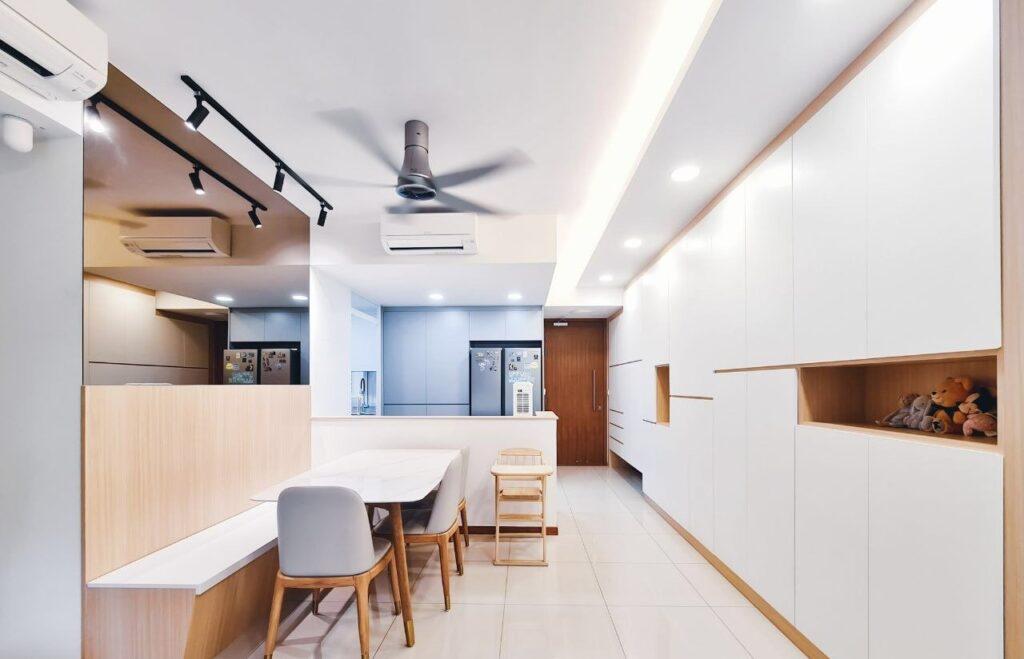
Minimalist Color Trends: Warm Neutrals & Earthy Accents
While clean whites and soft greys remain foundational in minimalist design, 2025 introduces warmer, nature-inspired tones that add depth without clutter. Shades like warm terracotta and muted sage green are gaining traction as they bring subtle vibrancy to neutral backdrops. These hues work particularly well in Singapore’s tropical context, creating a soothing indoor-outdoor connection. For those preferring classic minimalism, sophisticated greige (grey-beige) and cloud white with cool undertones continue to dominate, especially when paired with monochromatic schemes. The strategic use of a single accent wall in deeper tones—like charcoal or slate blue—can anchor a space without overwhelming it. When selecting paints and finishes, matte and limewash textures are preferred over glossy surfaces for their understated elegance and ability to conceal imperfections in HDB’s concrete walls.
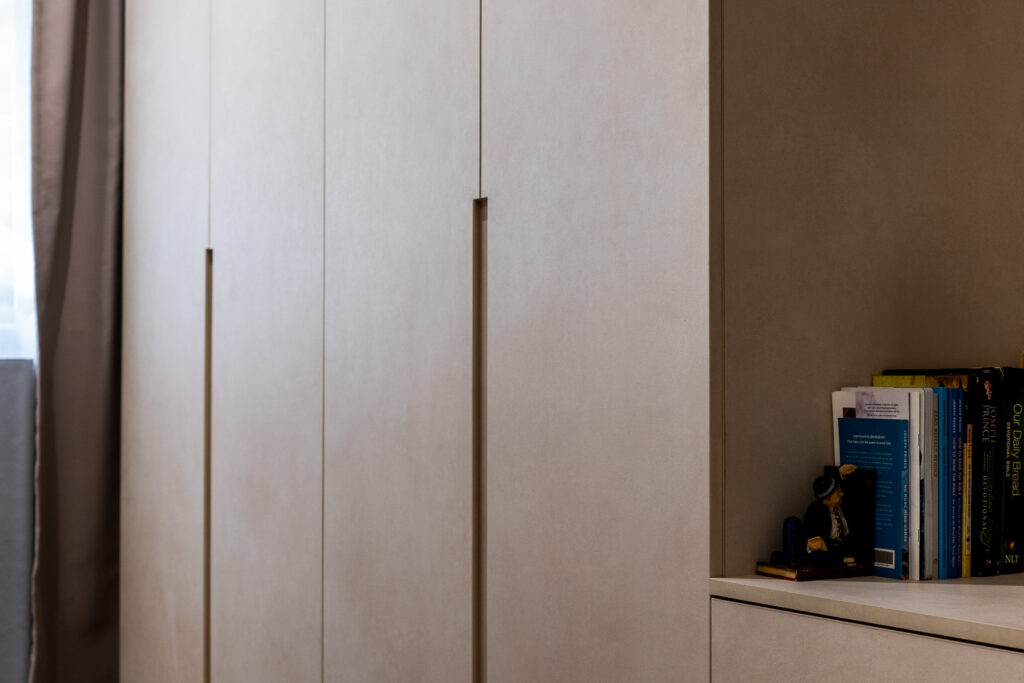
Smart Lighting & Biophilic Design Integration
Natural light remains the cornerstone of minimalist interiors, but 2025 sees technological enhancements that optimize illumination. Switchable privacy glass, which transitions from clear to opaque electronically, allows for both openness and privacy as needed—perfect for ground-floor units or condominiums facing busy areas. For upper-floor HDBs, UV-filtering windows help reduce heat gain while maintaining brightness, addressing Singapore’s perennial challenge of balancing sunlight with thermal comfort.
Artificial lighting has evolved beyond basic functionality. The latest systems feature circadian rhythm tuning, automatically adjusting color temperatures throughout the day to support residents’ natural energy cycles. Discreet, integrated lighting solutions are gaining popularity, with LED strips hidden along ceiling coves and under floating vanities providing ambient glow without visible fixtures. Biophilic design elements are being incorporated through lighting choices as well—pendant lights with natural materials like rattan or basalt stone add organic texture while maintaining minimalist lines.
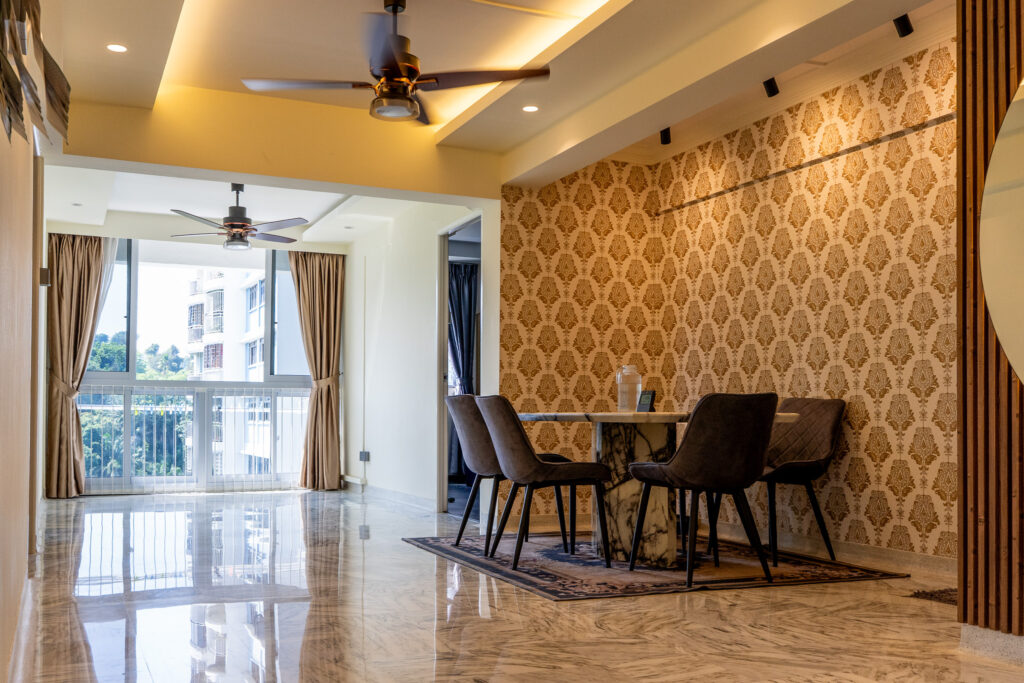
Space-Saving Innovations for Compact HDB Living
The challenge of limited square footage in Singapore homes has driven remarkable innovations in multi-functional furniture. 2025 sees the rise of transformable pieces that serve multiple purposes without compromising on aesthetics. Kitchen islands with fold-down extensions provide prep space when needed and disappear when not in use, while wall beds now incorporate built-in workstations that fold out for daytime productivity. Modular shelving systems have become more sophisticated, with configurable components that adapt to changing storage needs over time.
Storage solutions have evolved to be both invisible and intelligent. Push-to-open cabinetry eliminates visual clutter from handles, creating seamless walls of storage. Previously unused spaces like voids under staircases are being transformed into pull-out drawers or compact home offices. Even furniture is getting smarter—coffee tables with built-in wireless charging pads and sofas with hidden compartments for blankets demonstrate how minimalism and functionality can coexist beautifully.
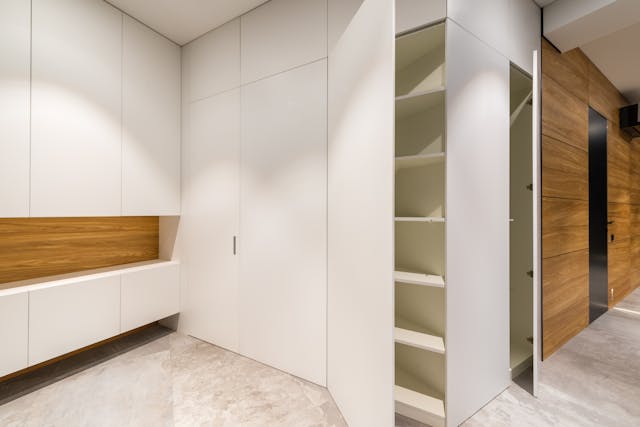
Sustainable Materials & Future-Ready Finishes
Environmental consciousness is reshaping material choices in minimalist design. Recycled materials are being repurposed in innovative ways—reclaimed wood appears in feature walls, while recycled glass finds new life as kitchen countertops with unique, organic patterns. Bamboo flooring has emerged as a sustainable alternative to traditional hardwood, offering similar warmth and durability with faster renewability.
Wall finishes are becoming more textured yet minimalist. Micro-cement provides a continuous, industrial-chic surface that’s both durable and easy to maintain—ideal for Singapore’s humid climate. For those preferring softer aesthetics, limewash paint creates subtle movement and depth while remaining low-maintenance. These materials align with the minimalist ethos by being both beautiful and practical, requiring less frequent replacement or refurbishment.
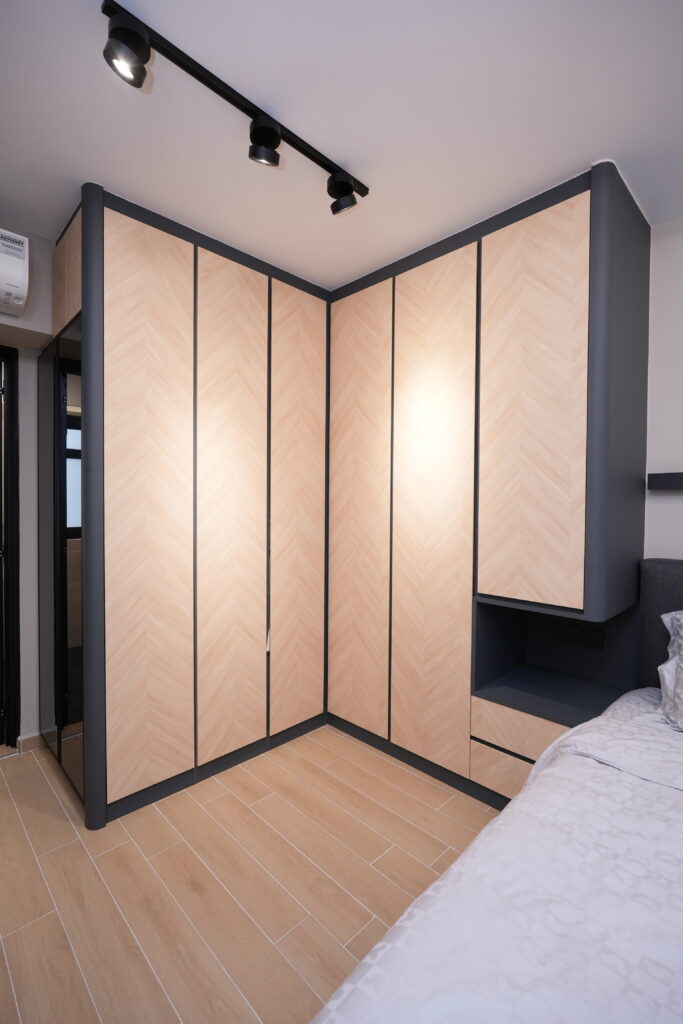
Why Dreamakers Interior Excels at Minimalist Design
Our design team specializes in creating minimalist spaces that are both timeless and forward-looking. We understand how to balance Singapore’s unique spatial constraints with the desire for beautiful, functional living environments. Our approach combines:
- Space Planning Expertise: Maximizing every square centimeter through intelligent layout design
- Material Knowledge: Selecting sustainable, durable finishes suited to local conditions
- Technology Integration: Seamlessly incorporating smart home features
- Budget Awareness: Delivering high-impact transformations at various price points
The minimalist approach in 2025 represents an evolution rather than a revolution—it’s about creating homes that are simpler, smarter, and more sustainable. By focusing on quality materials, intelligent space usage, and seamless technology, we can craft interiors that feel both spacious and welcoming. This philosophy proves particularly valuable in Singapore’s compact homes, where every design decision must serve multiple purposes.
Ready to reimagine your HDB with 2025’s minimalist vision? Contact Dreamakers Interior for a consultation tailored to your space and lifestyle.
